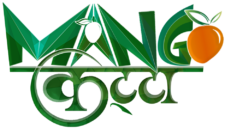Introduction
Iron, a crucial mineral for the body, plays a central role in maintaining overall health. It’s responsible for transporting oxygen in the blood, supporting immune function, and aiding energy production. While red meat is commonly associated with high iron content, there’s a treasure trove of iron-rich fruits and vegetables available for those who prefer a plant-based diet. In this blog, we’ll delve into the vibrant world of these nutrient-rich options and discover how they can significantly contribute to a balanced and healthy lifestyle.
The Significance of Iron
Before we explore the realm of iron-rich fruits and vegetables, it’s essential to grasp why iron is vital for our well-being. Iron is a key component of hemoglobin, a protein found in red blood cells that carries oxygen from the lungs to various parts of the body. Without an adequate intake of iron, the body may produce fewer red blood cells, potentially leading to iron-deficiency anemia. This condition can result in fatigue, weakness, and diminished cognitive function.
Plant-Based Iron vs. Animal-Based Iron
Iron comes in two forms: heme iron (from animal sources) and non-heme iron (from plant sources). While heme iron is generally more readily absorbed by the body, non-heme iron from plant-based sources can be an excellent way to meet your daily iron needs when incorporated wisely.
Top Iron-Rich Fruits
- Prunes: These dried plums are exceptionally rich in non-heme iron. They’re also loaded with vitamin C, which boosts iron absorption. Snacking on prunes or incorporating them into your morning routine can be a flavorful and nutritious choice.
- Dried Apricots: Dried apricots are a convenient, iron-packed snack that also provides a significant dose of dietary fiber, benefiting digestion and overall health.
- Raisins: Raisins are versatile and easy to incorporate into your diet. They contain non-heme iron and a natural sweetness that can enhance the flavor of various dishes.
Top Iron-Rich Vegetables
- Spinach: Spinach is a superstar among iron-rich vegetables. Packed with iron and an array of essential vitamins and minerals, it can be used in salads, smoothies, or as a side dish.
- Kale: Kale is another green giant, brimming with iron and antioxidants that support overall health. It’s a versatile leafy green that can be incorporated into salads, soups, and stir-fries.
- Broccoli: This cruciferous vegetable is known for its iron content and is a versatile addition to stir-fries, pasta dishes, and roasted vegetable medleys.
Enhancing Iron Absorption
To make the most of non-heme iron from plant-based sources, consider these strategies:
- Combine with Vitamin C: Foods rich in vitamin C, such as citrus fruits, strawberries, and bell peppers, can significantly enhance iron absorption. Pair your iron-rich fruits and vegetables with these vitamin C sources.
- Moderate Iron Inhibitors: Certain substances like coffee, tea, and calcium supplements can hinder iron absorption. Limit the consumption of these inhibitors when consuming iron-rich foods.
- Cook with Cast Iron: Cooking in cast iron pans can boost the iron content of your meals, particularly in acidic dishes like tomato-based sauces.
Conclusion
Iron is a critical nutrient essential for good health. While animal products are commonly associated with iron, integrating iron-rich fruits and vegetables into your diet can be a delicious and nutritious choice. By diversifying your meals and following simple strategies to enhance iron absorption, you can maintain healthy iron levels and support your body’s overall well-being. Embrace the colorful world of plant-based, iron-rich foods, and fuel your vitality naturally.

